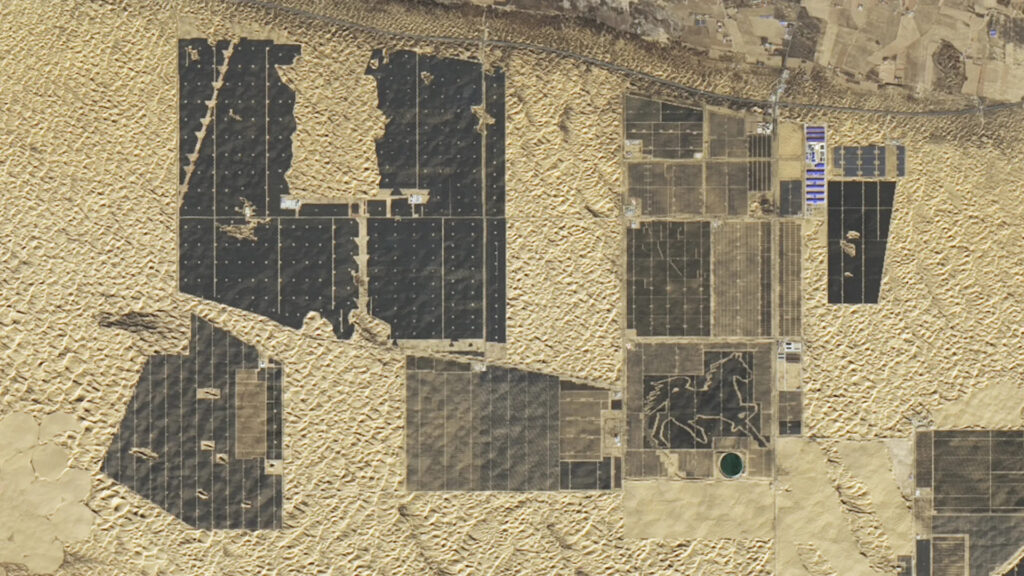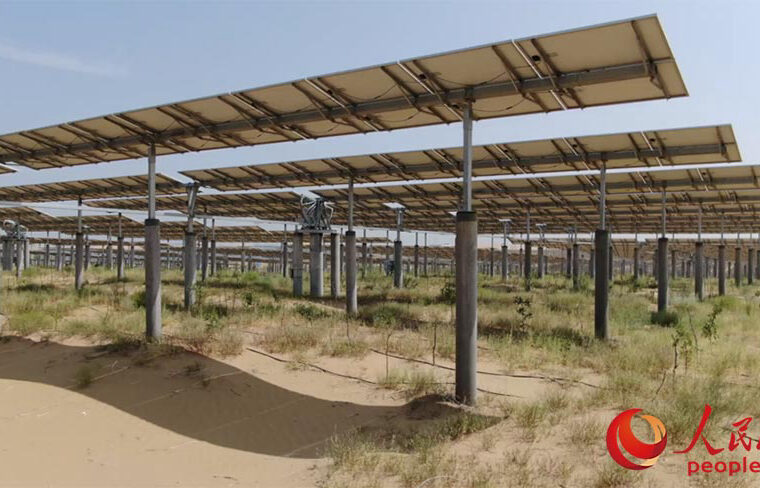China is embarking on a groundbreaking initiative with the construction of the Solar Great Wall, an ambitious solar energy project located in the Kubuqi Desert in Inner Mongolia. Set for completion by 2030, this enormous undertaking is poised to transform the region’s energy landscape while tackling environmental challenges.
The Solar Great Wall will stretch an impressive 400 kilometers in length and 5 kilometers in width, with a maximum output capacity of 100 gigawatts. This clean energy powerhouse is expected to provide sustainable electricity to Beijing and nearby regions, significantly contributing to the country’s renewable energy goals.
According to estimates, the project will create approximately 50,000 jobs for the local population, bolstered by an investment of up to $100 billion. This initiative not only promises economic benefits but also aims to combat desertification—a pressing issue in the area.
Recent satellite images from NASA reveal the ongoing construction of the Solar Great Wall, showcasing a vast array of solar panels and photovoltaic (PV) power projects emerging across the desert landscape. NASA highlighted the transformation of the Kubuqi Desert, once deemed a “sea of death,” into a “sea of photovoltaic possibility.”
The agency noted, “The Kubuqi’s sunny weather, flat terrain, and proximity to industrial centers make it a desirable location for solar power generation.” The panels are being installed in a long, narrow band of dunes just south of the Yellow River, strategically located between the cities of Baotou and Bayannur.
Beyond providing power, the Solar Great Wall is designed to address the critical issue of desertification, which turns fertile land into desert-like conditions. Project planners anticipate that the initiative will help stop dune movement and reduce wind speeds, creating a more stable environment.
Elevated solar panels will also offer shade, promoting the growth of grass and crops in the region. Recent data indicates that solar projects have played a significant role in greening China’s deserts, contributing to environmental restoration efforts.

According to the National Energy Administration of China, the nation’s solar power capacity surpassed 880 gigawatts in 2024, making it the leading country in solar energy production. China also manufactures a significant portion of the world’s solar panels and continues to invest heavily in large-scale solar and wind projects, including the Solar Great Wall.
As the Solar Great Wall progresses, it stands as a testament to China’s commitment to clean energy and environmental sustainability. This monumental project not only aims to power millions of homes but also addresses critical ecological issues, paving the way for a greener future. With its ambitious goals and innovative approach, the Solar Great Wall is set to become a symbol of renewable energy advancement in the 21st century.



